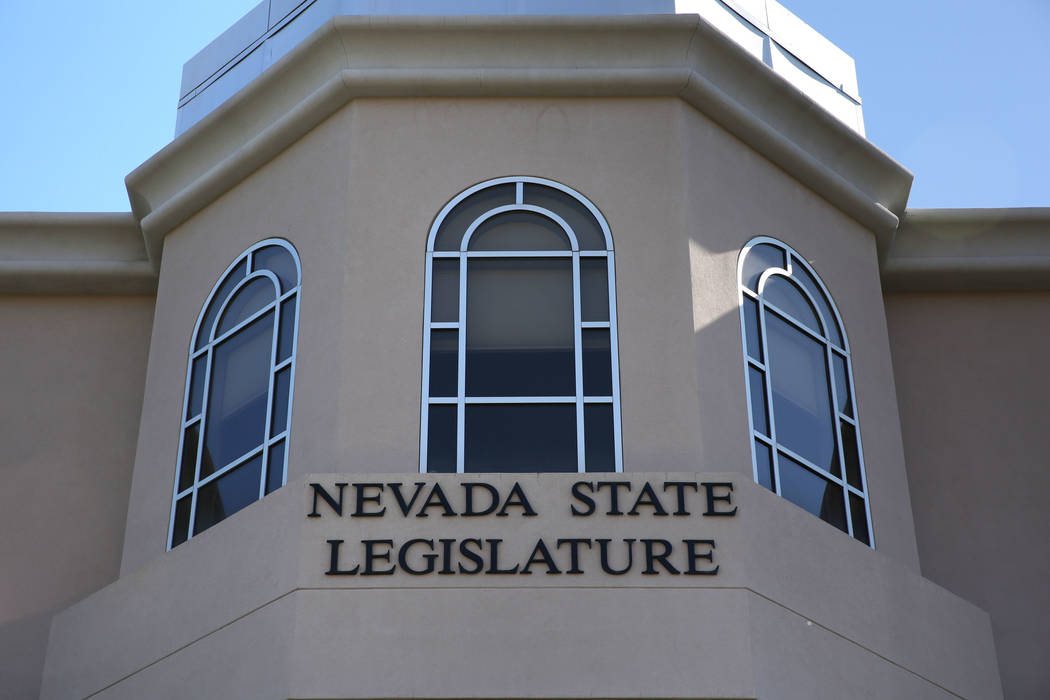COMMENTARY: Collective bargaining for state government workers would bust the budget
In the coming days, the Legislature will consider whether to allow Nevada’s state government employees to collectively bargain. Right on time, the union-affiliated Economic Policy Institute has produced research purporting to show that Nevada state workers are underpaid. But that research is incorrect.
Nevada’s state government employees receive salaries slightly below private-sector levels, but benefits that are massively more generous. For most state employees, total compensation almost surely exceeds what they would receive in private-sector jobs.
Since 1965, Nevada has prohibited state workers from collectively bargaining with the government over wages and benefits. But with Democrats now controlling state government, Senate Bill 135 would make collective bargaining mandatory for state workers. The question is whether collective bargaining, and the estimated $500 million increase in state spending that comes with it, is necessary.
A new analysis from the Economic Policy Institute, a Washington, D.C., think tank whose board members include public employee union heads, says yes. The EPI study claims that Nevada state government employees receive salaries that are about 10 percent below private-sector levels, and that government benefits aren’t generous enough to make up the difference.
EPI’s salary estimate is reasonable: In my own analysis of Census Bureau data, Nevada state government employees received salaries 5 percent to 10 percent below those paid to private-sector employees, depending upon how I statistically controlled for differences in education, experience and other factors that influence pay.
But benefits are a completely different story. EPI uses Bureau of Labor Statistics data that don’t correctly account for the value of employee pensions, ignore public-sector retiree health benefits outright and aren’t even specific to Nevada. Instead, the EPI data covers benefits in eight Mountain states. That won’t work.
But we can get state-specific benefits data from the federal government’s National Income and Product Accounts (NIPA), which are prepared by the economists at the federal Bureau of Economic Analysis in accordance with standards followed by other countries. The NIPA data include employee benefits such as health coverage; the value of newly-accruing pension benefits (meaning that costs associated with past unfunded liabilities are excluded); and social insurance contributions and other taxes paid on workers’ behalf. The NIPA data do not include benefits such as paid vacation and sick leave, which are more generous in the public sector.
According to the federal NIPA data, the average salary of a Nevada state government employee in 2017 was $52,519, similar to salaries in industries such as manufacturing, health care, insurance and information technology. But the NIPA data show that Nevada state workers also receive $32,739 in present or future benefits, for total compensation per employee of $85,258. Benefits in those other private industries paled in comparison to government, averaging less than $11,000 per employee. As a result, total compensation per worker in manufacturing, health care, insurance and information technology averaged 30 percent less than in state government. The lesson: Even when salaries are similar, public-sector benefits are much, much more generous than in private-sector jobs.
Why are Nevada benefits so expensive? In part, it’s because Nevada offers one of the most generous public employee pension systems in the country. The federal NIPA data measure the “normal cost” of state pensions, which is the value of new pension benefits accruing to workers each year as a percentage of their salaries. Even accounting for the fact that state workers don’t receive Social Security, their benefits are still substantially more generous than the median state government.
All of this helps explain why turnover in state government is low. The Nevada Policy Research Institute made a public records request to obtain data on quit rates in state government, finding them to be only one-third the level of those in white-collar private-sector jobs.
Collective bargaining for state government employees would almost surely raise pay and benefits — after all, that’s the point of it.
It is neither fair nor necessary that taxpayers, most of whom receive lower salaries and benefits than state government employees, pay more so that public-sector compensation can increase.
Hard data show that state government salaries in Nevada are close to private-sector levels and benefits are much, much more generous. State employees are doing fine already.
Andrew G. Biggs is a resident scholar at the American Enterprise Institute.

















